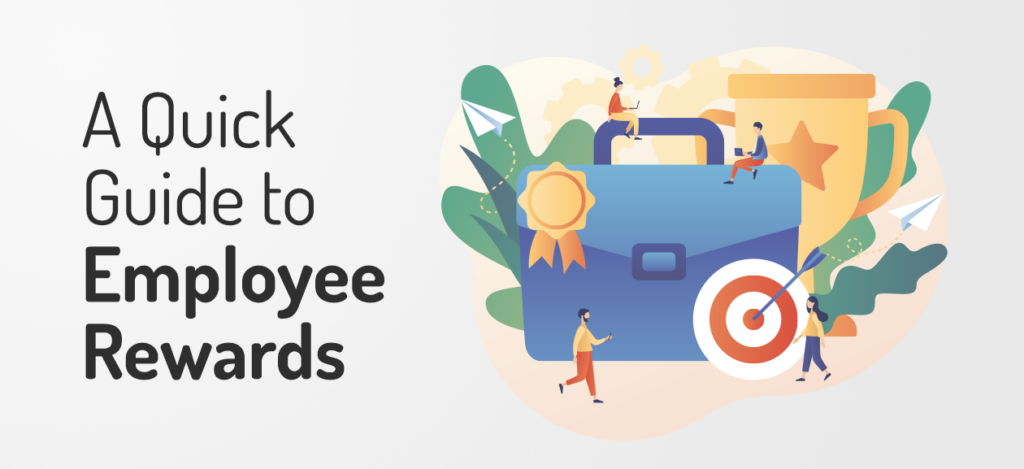
Many think producing motivation in the workplace is a costly and timely practice with little to no return. In fact, 57% of HR leaders say that finding the right tools to motivate is a challenging task1. Making sure your employees are happy, recognized and productive seems like somewhat of a daunting achievement as an HR leader, but we’re here to help and make sure you know the easiest and most effective way you can reward your employees and in turn increase productivity by a 17%2.
What are Employee Rewards?
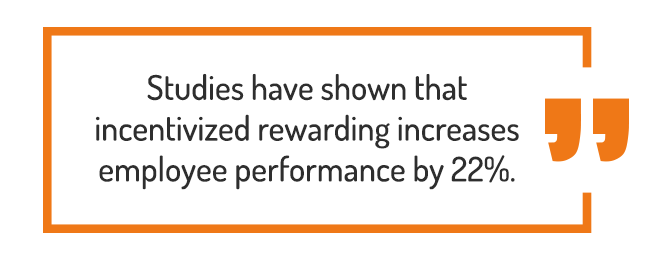
Putting it simply, anything that makes your employees feel recognized and appreciated is an employee reward.
The importance of being recognized and valued is greatly underestimated, while studies have shown that simple rewards can reduce employee turnover by 31%*. Rewarding employees is something that can be repeated again and again, with a potential for others to join in on the practice. When one employee sees hard work being rewarded and valued, they too will want to be treated similarly. Rewarding becomes a critical function in the workplace environment.
Examples of employee recognition can take the form of incentives, which are predetermined goals that employees strive to achieve. Things like sales incentives, customer recognition and positive feedback, employee program participation, leadership training, among others are just a few examples of incentivized rewards. Studies have shown that incentivized rewarding increases employee performance by 22%3.
The Nature of Employee Rewards:
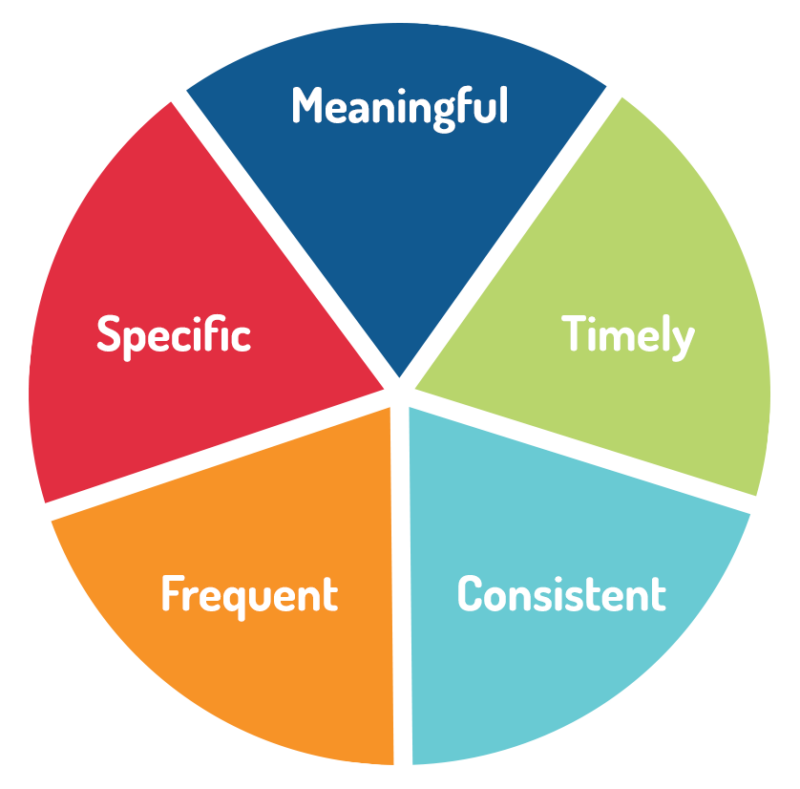
- Meaningful – It’s not enough to give your employees any gift, it needs to be something they want, otherwise the rewarding aspect could fall on deaf ears and you would have gained nothing in return. Oftentimes, gift cards are a fantastic way to ensure that the employees are satisfied with their reward, allowing them to take advantage of the fact that they can use the gift card for whatever they want.
- Timely – Make sure that the rewards you give coincide with the time of the positive behavior. If an employee carries out a major task successfully, they wouldn’t want to be recognized for it months later. The sooner the better.
- In addition to project/performance based rewards, you can also make sure that rewards coincide with holidays and occasions such as Eid, Ramadan and other Festive Seasons.
- In addition to project/performance based rewards, you can also make sure that rewards coincide with holidays and occasions such as Eid, Ramadan and other Festive Seasons.
- Consistent – If some employees receive recognition while others do not, there can be a gap in the program. Make sure to communicate your intentions (to everyone!) prior to them performing positively.
- Frequent – Rewarding employees once a year isn’t enough. The more you reward, the more your employees will reciprocate high productivity and performance. Setting a budget for a frequent rewards program will make it more effective.
- Specific – Make sure the employee knows what they’re being rewarded for. Sincerity and specificity is a key part of recognition.
- An example of this would be the end-of-year rewards. These rewards applaud employees for their hard work throughout the year, rather than just a specific task or target. These are very popular among HR leaders and employees look forward to these types of annual rewards.
Reward Categories in the Workplace
Within the rewarding umbrella as a whole, there are different facets and types of rewards. They usually fall within 4 categories:
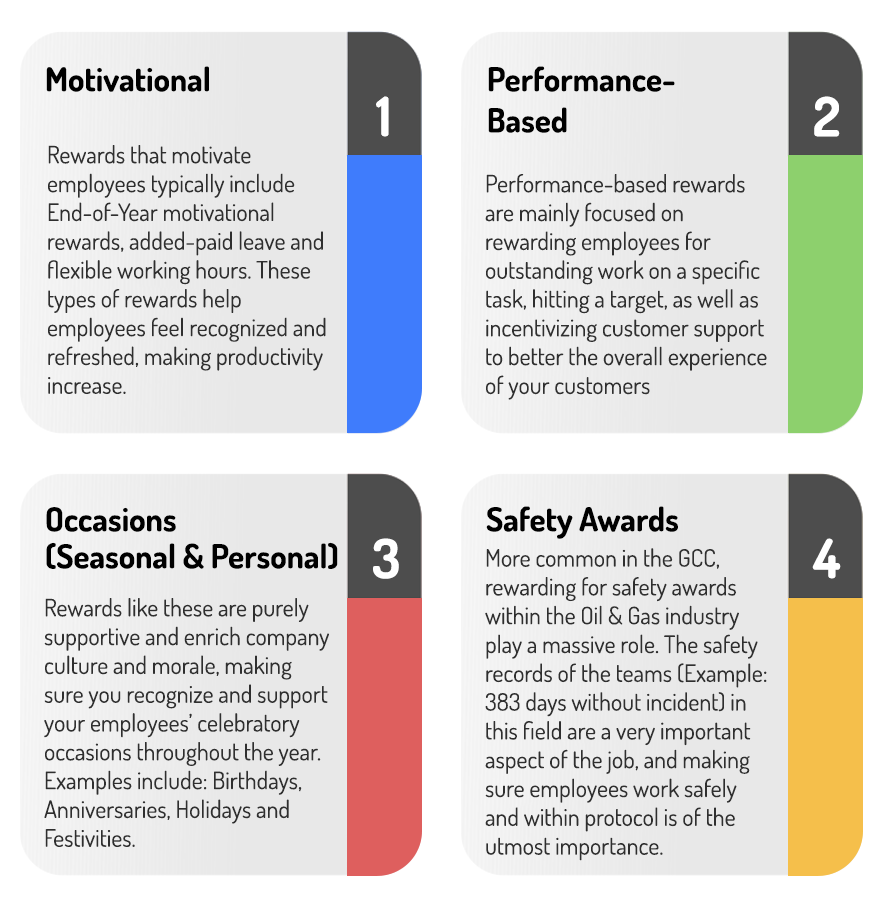
Types of Rewards
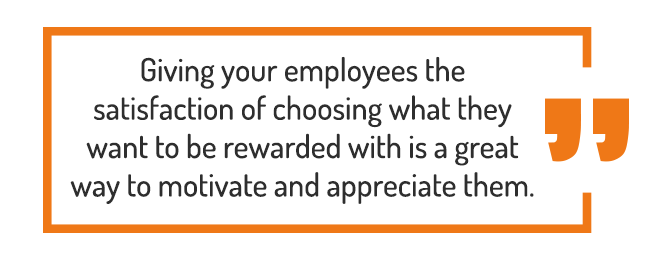
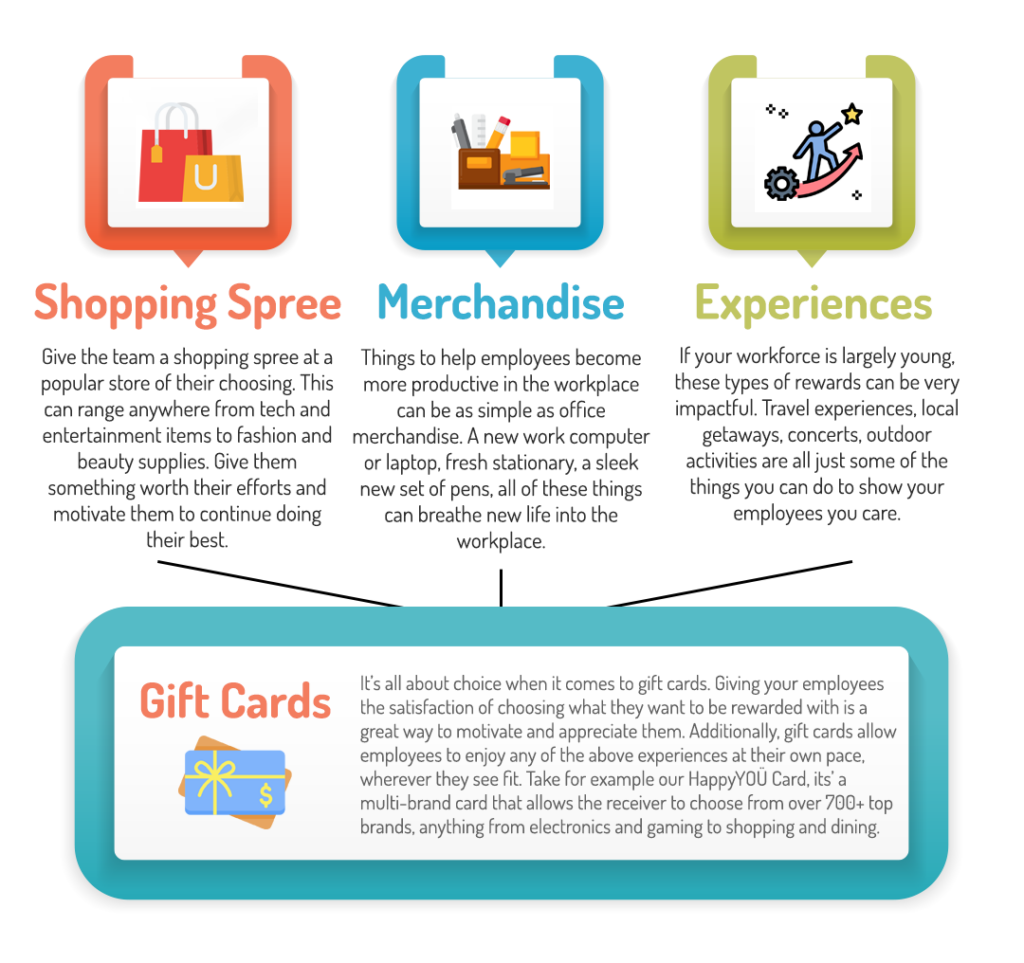
Creating a Rewards Program: Factors to Consider
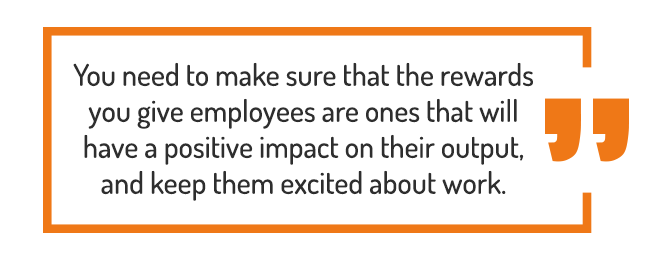
Employee rewards programs are internal plans that reward employees in addition to their normal compensation. You can include these programs as part of your overall budget to make financial planning a lot easier. A few things to keep in mind when creating an employee rewards program are:
1- What behaviors do you wish to encourage?
Always keep your company’s values in mind when rewarding your employees. Rewards aren’t just about hitting targets, but upholding the values of the company and enriching the company culture.
2- What budget are you keeping for the program?
Be careful not to underestimate your budgets. If you are to be transparent about the program, you need to make sure you can deliver on specific rewards and while staying within the overall budget.
3- What will the rewards be?
Deciding what to reward can be a challenging task. Will it be the same for everyone? Will it depend on the achievement? You need to make sure that the rewards you give employees are ones that will have a positive impact on their output, and keep them excited about work. Things like multi-brand gift cards are a wonderful way to show your appreciation, especially when they get to pick and choose what they spend it on. Studies show that gift cards are a very effective way to successfully reward employees. You can also reward employees based on holidays and occasions, such as work anniversaries, Festive Seasons, Ramadan, Eid, among others.
There’s practically no limit to how you can reward and recognize your employees in the workplace. Rewards make for better, happier and more productive employees, it’s a win-win. Set up your rewards program today and enrich your workforce for a more productive work environment.
To learn more, click here.
Sources:


